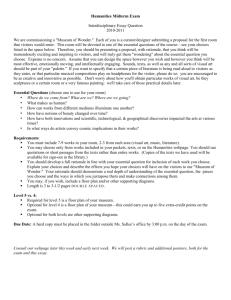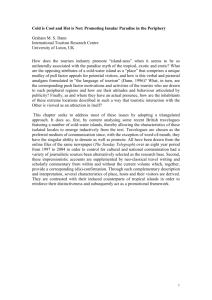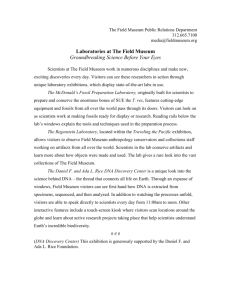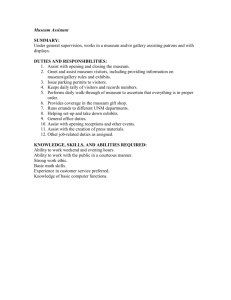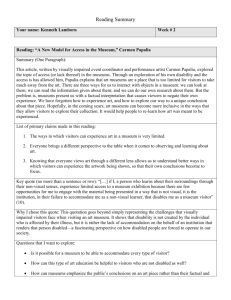Essay from the text “View of Paradise lost” By
advertisement
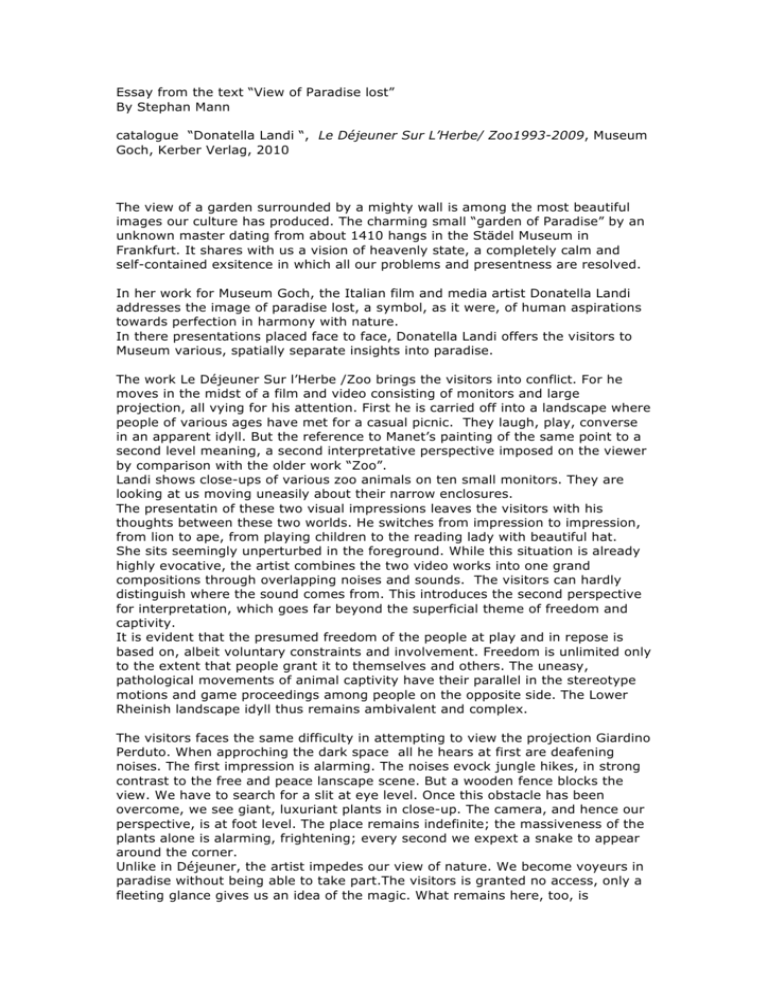
Essay from the text “View of Paradise lost” By Stephan Mann catalogue “Donatella Landi “, Le Déjeuner Sur L’Herbe/ Zoo1993-2009, Museum Goch, Kerber Verlag, 2010 The view of a garden surrounded by a mighty wall is among the most beautiful images our culture has produced. The charming small “garden of Paradise” by an unknown master dating from about 1410 hangs in the Städel Museum in Frankfurt. It shares with us a vision of heavenly state, a completely calm and self-contained exsitence in which all our problems and presentness are resolved. In her work for Museum Goch, the Italian film and media artist Donatella Landi addresses the image of paradise lost, a symbol, as it were, of human aspirations towards perfection in harmony with nature. In there presentations placed face to face, Donatella Landi offers the visitors to Museum various, spatially separate insights into paradise. The work Le Déjeuner Sur l’Herbe /Zoo brings the visitors into conflict. For he moves in the midst of a film and video consisting of monitors and large projection, all vying for his attention. First he is carried off into a landscape where people of various ages have met for a casual picnic. They laugh, play, converse in an apparent idyll. But the reference to Manet’s painting of the same point to a second level meaning, a second interpretative perspective imposed on the viewer by comparison with the older work “Zoo”. Landi shows close-ups of various zoo animals on ten small monitors. They are looking at us moving uneasily about their narrow enclosures. The presentatin of these two visual impressions leaves the visitors with his thoughts between these two worlds. He switches from impression to impression, from lion to ape, from playing children to the reading lady with beautiful hat. She sits seemingly unperturbed in the foreground. While this situation is already highly evocative, the artist combines the two video works into one grand compositions through overlapping noises and sounds. The visitors can hardly distinguish where the sound comes from. This introduces the second perspective for interpretation, which goes far beyond the superficial theme of freedom and captivity. It is evident that the presumed freedom of the people at play and in repose is based on, albeit voluntary constraints and involvement. Freedom is unlimited only to the extent that people grant it to themselves and others. The uneasy, pathological movements of animal captivity have their parallel in the stereotype motions and game proceedings among people on the opposite side. The Lower Rheinish landscape idyll thus remains ambivalent and complex. The visitors faces the same difficulty in attempting to view the projection Giardino Perduto. When approching the dark space all he hears at first are deafening noises. The first impression is alarming. The noises evock jungle hikes, in strong contrast to the free and peace lanscape scene. But a wooden fence blocks the view. We have to search for a slit at eye level. Once this obstacle has been overcome, we see giant, luxuriant plants in close-up. The camera, and hence our perspective, is at foot level. The place remains indefinite; the massiveness of the plants alone is alarming, frightening; every second we expext a snake to appear around the corner. Unlike in Déjeuner, the artist impedes our view of nature. We become voyeurs in paradise without being able to take part.The visitors is granted no access, only a fleeting glance gives us an idea of the magic. What remains here, too, is ambivalence between beauty and the unease we feel at the resounding noise of plants being broken off and trampled under.(…)

